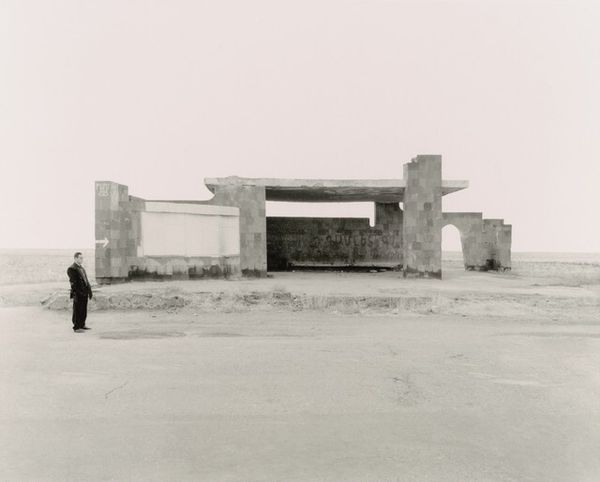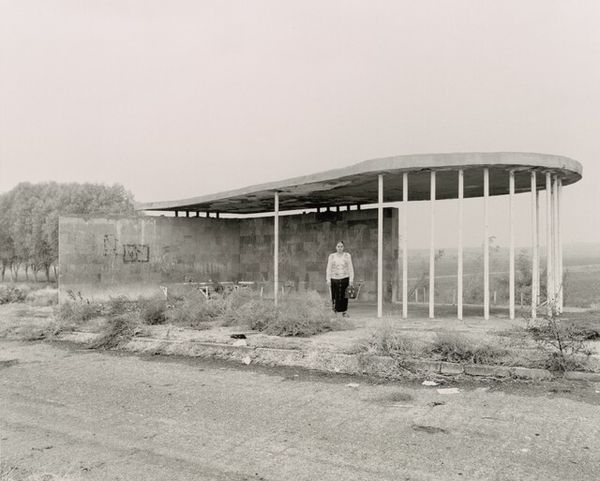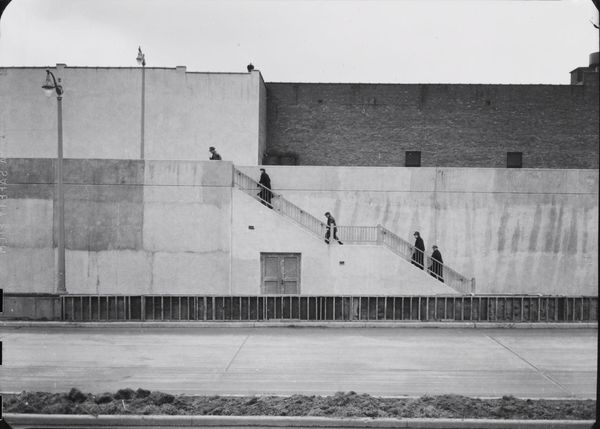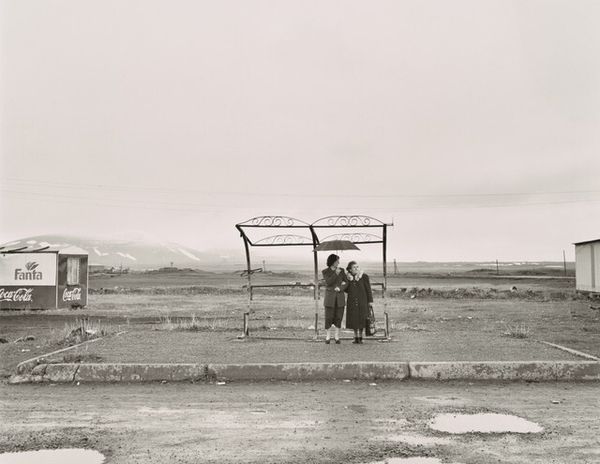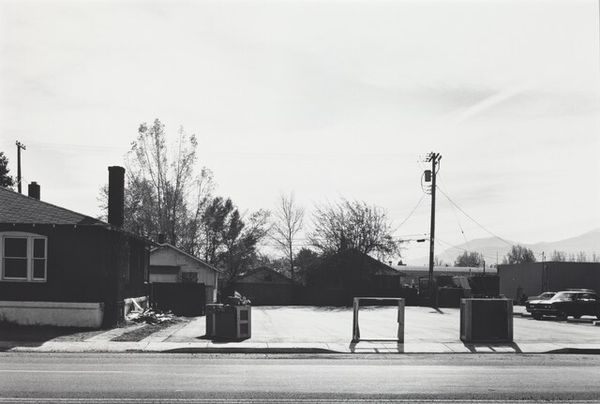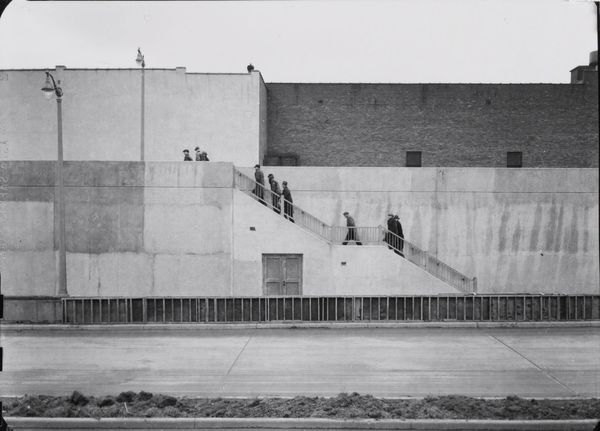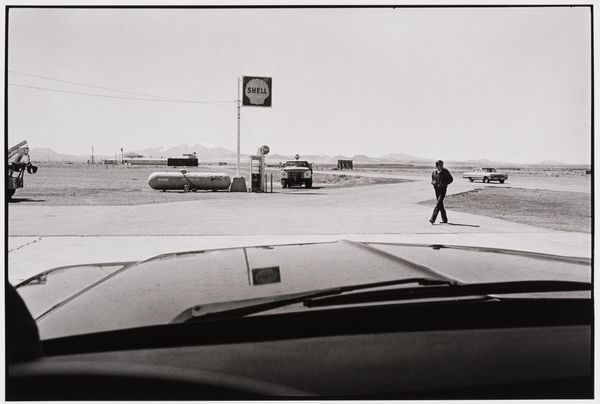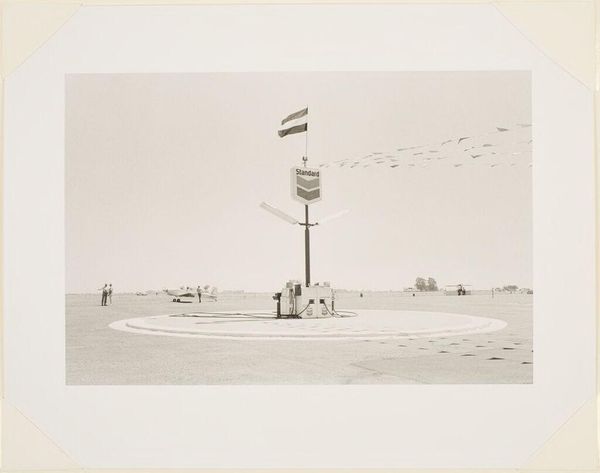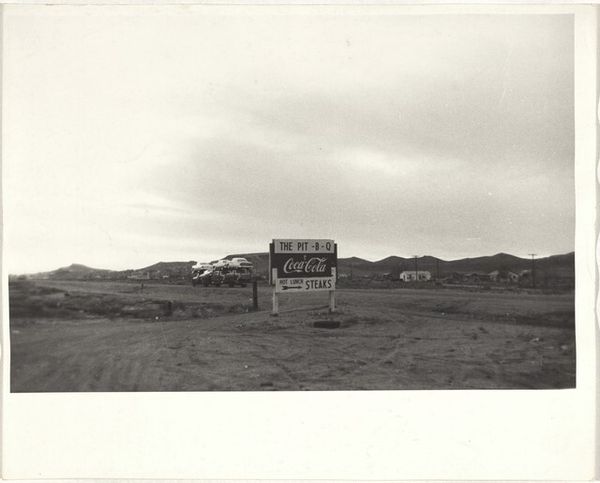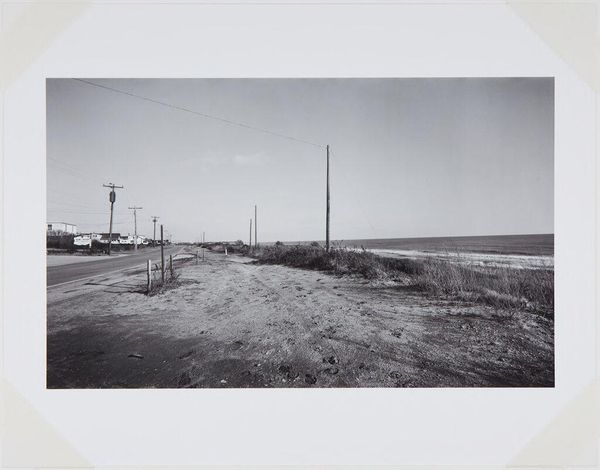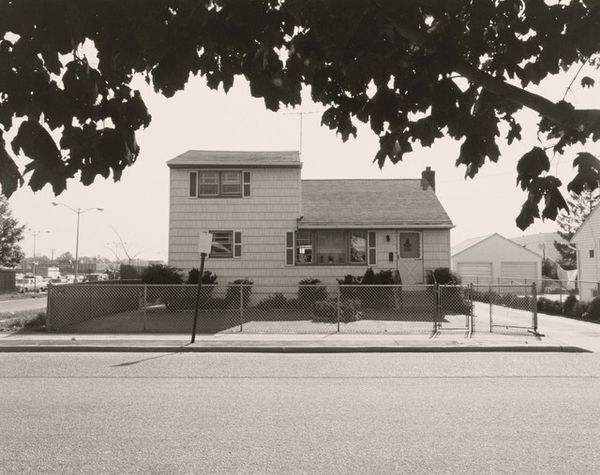
photography
#
contemporary
#
conceptual-art
#
black and white photography
#
street shot
#
landscape
#
outdoor photograph
#
outdoor photo
#
black and white format
#
street-photography
#
photography
#
sportswear sale photography
#
monochrome photography
#
outdoor activity
#
post-internet
#
monochrome
#
grey scale mode
#
monochrome
Dimensions: image: 36 × 45.3 cm (14 3/16 × 17 13/16 in.) sheet: 39.9 × 50.1 cm (15 11/16 × 19 3/4 in.)
Copyright: National Gallery of Art: CC0 1.0
Curator: Ursula Schulz-Dornburg's "Gymri - Erevan" from 2000 presents a stark landscape, captured through her distinctive photographic lens. Editor: My first thought? It's haunting. The monochrome palette amplifies the sense of isolation, and the geometric structures seem stranded. Curator: Indeed. Schulz-Dornburg often focuses on architectural remnants, exploring how structures embody historical and cultural narratives. We must understand that this piece continues her well-documented "Transit Zones" theme which concentrates on spaces in-between borders, and national edges, and areas once strategic for global economies now dilapidated or forgotten. This project in particular focused on the border between Turkey and Armenia. Editor: Right. And this border specifically carries immense weight, burdened by histories of conflict and political tension that relate to questions of memory and territorial control. I mean, looking at these block-like brutal structures you feel the weight of the concrete as representing not just physical barriers, but symbolic ones. Curator: Precisely. The use of black and white enhances the timeless quality, distancing the scene yet also universalizing it. It's not simply a record of a place, but an exploration of how political landscapes are constructed and experienced. Schulz-Dornburg photographed such sites using film with medium-format cameras, in black and white, without manipulation or alteration, and this consistency allowed for all her Transit Zones project photographs, while of very different geographies and structures, to be compiled and collected in publications later. Editor: And even within the limited grayscale, there are powerful tonal variations. The textures of the asphalt against the dilapidated buildings is poignant. It feels almost apocalyptic. Even if it represents the year 2000, we are prompted to reflect on issues of marginalization and abandonment which affect today. It serves as a quiet yet firm statement against such issues. Curator: Absolutely. Her consistent artistic choice not to use colors removes any sensationalizing and it places these constructed architectural geometries, along with nature's softer landscape in contrast. It's almost as though she's asking us to reassess our understanding of geopolitical divisions and their material legacies. Editor: A reminder that even seemingly inert structures carry stories of power and displacement. It makes you wonder who has been through this space, and what it represents for those crossing over from Armenia. The work definitely leaves you pondering what “border” even means in today’s climate of political divide. Curator: It invites a critical engagement with the socio-political implications embedded in seemingly simple landscapes, which is why the work remains so poignant to our present, offering new perspectives through which the observer can engage with the image and its contexts. Editor: Agreed. The photograph acts almost like a time capsule.
Comments
No comments
Be the first to comment and join the conversation on the ultimate creative platform.
